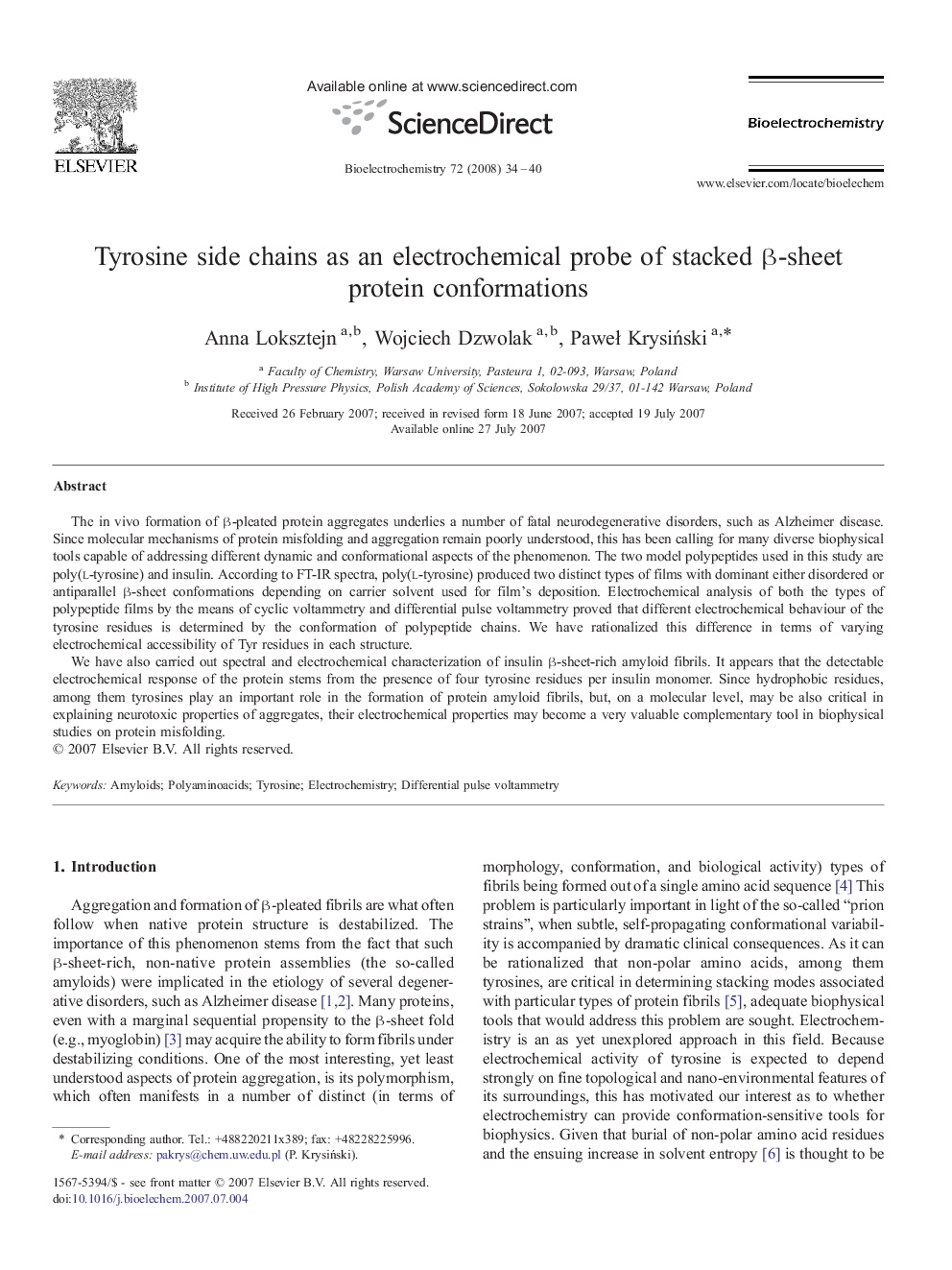| Article ID | Journal | Published Year | Pages | File Type |
|---|---|---|---|---|
| 1268912 | Bioelectrochemistry | 2008 | 7 Pages |
The in vivo formation of β-pleated protein aggregates underlies a number of fatal neurodegenerative disorders, such as Alzheimer disease. Since molecular mechanisms of protein misfolding and aggregation remain poorly understood, this has been calling for many diverse biophysical tools capable of addressing different dynamic and conformational aspects of the phenomenon. The two model polypeptides used in this study are poly(l-tyrosine) and insulin. According to FT-IR spectra, poly(l-tyrosine) produced two distinct types of films with dominant either disordered or antiparallel β-sheet conformations depending on carrier solvent used for film's deposition. Electrochemical analysis of both the types of polypeptide films by the means of cyclic voltammetry and differential pulse voltammetry proved that different electrochemical behaviour of the tyrosine residues is determined by the conformation of polypeptide chains. We have rationalized this difference in terms of varying electrochemical accessibility of Tyr residues in each structure.We have also carried out spectral and electrochemical characterization of insulin β-sheet-rich amyloid fibrils. It appears that the detectable electrochemical response of the protein stems from the presence of four tyrosine residues per insulin monomer. Since hydrophobic residues, among them tyrosines play an important role in the formation of protein amyloid fibrils, but, on a molecular level, may be also critical in explaining neurotoxic properties of aggregates, their electrochemical properties may become a very valuable complementary tool in biophysical studies on protein misfolding.
